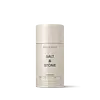What's inside
What's inside
 Key Ingredients
Key Ingredients

 Benefits
Benefits

 Concerns
Concerns

 Ingredients Side-by-side
Ingredients Side-by-side

Water
Skin ConditioningSodium C14-16 Olefin Sulfonate
CleansingCocamidopropyl Betaine
CleansingGlycerin
HumectantCocamide Mipa
EmulsifyingPolyglyceryl-4 Caprate
EmulsifyingParfum
MaskingBenzyl Alcohol
PerfumingCoco-Glucoside
CleansingGlyceryl Oleate
EmollientSodium Benzoate
MaskingCitric Acid
BufferingSodium Gluconate
Skin ConditioningPolyquaternium-7
Dehydroacetic Acid
PreservativeSodium PCA
HumectantSodium Lactate
BufferingAloe Barbadensis Leaf Juice
Skin ConditioningHyaluronic Acid
HumectantLactobacillus/Punica Granatum Fruit Ferment Extract
Skin ConditioningNiacinamide
SmoothingArginine
MaskingAspartic Acid
MaskingLeuconostoc/Radish Root Ferment Filtrate
AntimicrobialPCA
Humectant3-O-Ethyl Ascorbic Acid
Skin ConditioningHistidine
HumectantPhenylalanine
MaskingCarica Papaya Fruit Extract
Skin ConditioningVaccinium Angustifolium Fruit Extract
Skin ProtectingGlycine
BufferingAlanine
MaskingSerine
MaskingValine
MaskingIsoleucine
Skin ConditioningProline
Skin ConditioningThreonine
Benzyl Benzoate
AntimicrobialLimonene
PerfumingLinalool
PerfumingWater, Sodium C14-16 Olefin Sulfonate, Cocamidopropyl Betaine, Glycerin, Cocamide Mipa, Polyglyceryl-4 Caprate, Parfum, Benzyl Alcohol, Coco-Glucoside, Glyceryl Oleate, Sodium Benzoate, Citric Acid, Sodium Gluconate, Polyquaternium-7, Dehydroacetic Acid, Sodium PCA, Sodium Lactate, Aloe Barbadensis Leaf Juice, Hyaluronic Acid, Lactobacillus/Punica Granatum Fruit Ferment Extract, Niacinamide, Arginine, Aspartic Acid, Leuconostoc/Radish Root Ferment Filtrate, PCA, 3-O-Ethyl Ascorbic Acid, Histidine, Phenylalanine, Carica Papaya Fruit Extract, Vaccinium Angustifolium Fruit Extract, Glycine, Alanine, Serine, Valine, Isoleucine, Proline, Threonine, Benzyl Benzoate, Limonene, Linalool
Caprylic/Capric Triglyceride
MaskingTapioca Starch
Magnesium Hydroxide
AbsorbentSodium Bicarbonate
AbrasiveOzokerite
Emulsion StabilisingCocos Nucifera Oil
MaskingSodium Hyaluronate
HumectantSpirulina Platensis Extract
Skin ProtectingParfum
MaskingButyrospermum Parkii Butter
Skin ConditioningHelianthus Annuus Seed Oil
EmollientLactobacillus Ferment
Skin ConditioningTocopherol
AntioxidantMaltodextrin
AbsorbentIngredients Explained
These ingredients are found in both products.
Ingredients higher up in an ingredient list are typically present in a larger amount.
Parfum is a catch-all term for an ingredient or more that is used to give a scent to products.
Also called "fragrance", this ingredient can be a blend of hundreds of chemicals or plant oils. This means every product with "fragrance" or "parfum" in the ingredients list is a different mixture.
For instance, Habanolide is a proprietary trade name for a specific aroma chemical. When used as a fragrance ingredient in cosmetics, most aroma chemicals fall under the broad labeling category of “FRAGRANCE” or “PARFUM” according to EU and US regulations.
The term 'parfum' or 'fragrance' is not regulated in many countries. In many cases, it is up to the brand to define this term.
For instance, many brands choose to label themselves as "fragrance-free" because they are not using synthetic fragrances. However, their products may still contain ingredients such as essential oils that are considered a fragrance by INCI standards.
One example is Calendula flower extract. Calendula is an essential oil that still imparts a scent or 'fragrance'.
Depending on the blend, the ingredients in the mixture can cause allergies and sensitivities on the skin. Some ingredients that are known EU allergens include linalool and citronellol.
Parfum can also be used to mask or cover an unpleasant scent.
The bottom line is: not all fragrances/parfum/ingredients are created equally. If you are worried about fragrances, we recommend taking a closer look at an ingredient. And of course, we always recommend speaking with a professional.
Learn more about Parfum